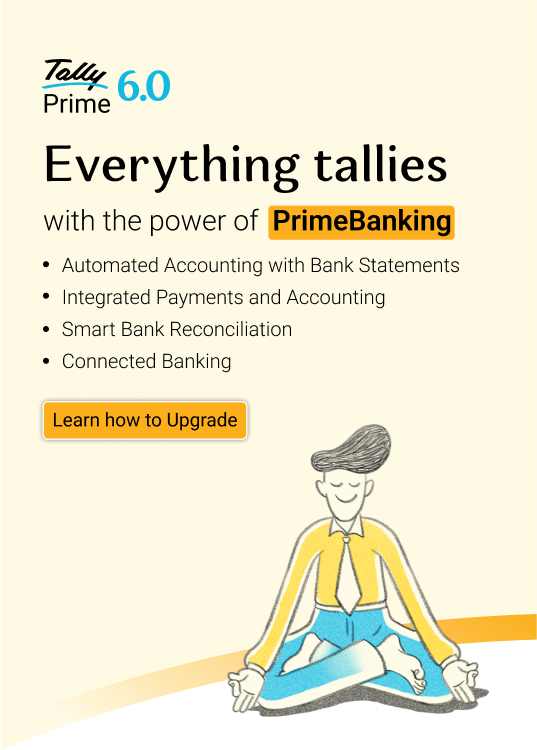It's 2025. Can we stop pretending shopping is still a neat, linear process? It’s not.
Customers don’t just walk into a store, pick what they need, and pay. We know it’s no longer that straightforward. They Google it. Watch a reel. Ask friends on WhatsApp. Compare it on Flipkart. Check if you have a return policy. Then maybe, just maybe, they’ll click that 'Buy Now' button.
That’s the reality. Today’s customer jumps between online and offline channels like they’re flipping TV channels with a remote. If your business isn’t keeping up, it’s missing opportunities and losing trust.
This is why omnichannel marketing has become one of the most important marketing strategies. It is not about just showing up, but showing up consistently, remaining connected, and being customer-friendly, wherever you are.
Top 7 omnichannel marketing trends to watch in 2025
Let’s break down the most exciting omnichannel trends for 2025. If you’re a small or mid-sized business (SMB) in India, these are all the right moves you’ll need to stand next to the big players.
1. Offline is back. It’s effective when done right
In 2023 and 2024, offline retail started making a strong return. More than 85% of global sales are still expected to be done in brick-and-mortar stores in 2025, as was predicted for 2024 by the Economist Intelligence Unit.
But it’s not going back to how it was. The new rule is, if you’re going to do it offline, make it smart and blend it with digital innovations.
Reference example: Think of a men’s wear store that lets customers scan a QR code at the trial room mirror. This could help them order a different size, check online availability, or save it to their cart to buy later from home.
Action steps:
- Sync your POS with your eCommerce platform or catalogue. If a product sells out online, staff should know that in-store too.
- Use Unified Payments Interface (UPI) or wallet-linked purchases to tie in loyalty points across channels.
- Build an in-store experience that connects to digital. Maybe something as simple as an email receipt with personalised recommendations.
Tool tip: The Tally Prime inventory management features can track in-store and online sales in one place, so you never lose sight of what’s moving.
2. WhatsApp, DMs, and voice notes are replacing salespeople
Nobody wants to fill out a form or wait for a callback anymore. Nah! They want answers in real time and in plain language, too. They’re asking questions like "Is this in stock, or can I return it if it doesn’t fit?". That’s something you can automate.
If your business takes too long to reply, someone else may do it.
As a home bakery that uses a WhatsApp chatbot, you can send out menus, take orders, and remind customers about delivery times. This system can dramatically improve sales without extra staff.
Action steps:
- Use WhatsApp Business with quick replies, product catalogues, and customer tags.
- It's fine to set up FAQs in chat, but always leave room for a human to intervene.
- Integrate your chat leads with your invoicing and follow-up system. No lead should go cold.
3. Unify your customer data or prepare for a messy future
If your sales data is on one spreadsheet, your customer queries are in Gmail, and your online orders live somewhere else, you’ve got a real problem on your hands. You probably are already seeing those cracks in the system. Here's the truth: disconnected data leads to disconnected service. And in 2025, customers expect you to know them.
A true omnichannel strategy means stitching together data from every touchpoint (website, store, app, email, and customer support) so you understand who your customer is and what they need.
If you run a jewellery store and are able to shift from paper records to a CRM, once sales and WhatsApp leads are synced, you can send birthday messages with relevant product suggestions. That kind of strategy often improves repeat sales.
Action steps:
- Consolidate your data using CRMs or tools like Tally that integrate inventory, payments, and customer interactions.
- Train your team to use this data without being creepy. “You bought this last Diwali, here’s something that matches” is good. “We saw you browsing this at 1am” is surely not.
- Use this info to build customer journeys. Don’t guess. Track what they like, click, and buy.
4. Don’t personalise for show. Do it to solve
Personalisation used to be a nice touch. Now, it’s the price of entry.
Customers expect to be treated as individuals. That doesn’t mean you have to hand-write every email, though. It means using data and automation to make it feel like you did.
Imagine an electronics reseller that sends emails based on what customers recently browsed. If someone looked at soundbars, they could receive a comparison guide along with tips.
As a fashion brand, automating a message such as “Hi Renu, we noticed you liked this kurta style. It’s now available in your size!” is gold for marketing.
Action steps:
- Use dynamic content in emails based on customer activity. If someone browsed your baking tools, send them a how-to recipe along with a special bundle.
- Segment your SMS lists by interest or buying behaviour. Don’t blast the same promo to everyone. That’s how you get blocked.
- Use analytics tools to recommend relevant products during checkout or even while scrolling your site.
- Segment your customer base: new vs returning, high-value vs deal-seekers, etc.
- Build different journeys for each. A first-time visitor shouldn’t get the same message as a loyal buyer.
- Offer context-driven help. If someone viewed air conditioners three times, don’t send them a deal on toasters.
5. Social commerce is the new storefront
In 2025, your Instagram feed will be your storefront. Instagram, Facebook, YouTube, Pinterest, and even LinkedIn aren’t just marketing channels anymore. They’re full-blown marketplaces.
Shoppable posts, in-app checkout, influencer collaborations, and live video sales are reshaping how customers in India shop. If you’re not selling where your customers scroll, you’re invisible. Customers expect to tap, scroll, pay, and move on without going to your website.
Practical example: Think of a home decor brand that posts setup videos on Reels, tags its products, and allows customers to purchase without leaving the app.
Action steps:
- Set up product catalogues on Instagram and Facebook. Make sure the stock is updated.
- Partner with micro-influencers. They’re often more trusted (and more affordable) than big celebs. Micro-influencers with 5K to 20K followers often get higher engagement and are more affordable.
- Try live video demos. Run product launches or live Q and A sessions. Keep it raw and real. Even if you fumble, people love seeing the “real” you. People respond more to honest behind-the-scenes than ads.
Regional tip: Use platforms like ShareChat, Moj, or YouTube Shorts for tier-2 and tier-3 audiences. Speak the language and use local slang.
6. Voice search and vernacular languages are dominating
With over 90 percent of the Indian population accessing the internet in regional local languages and voice search becoming common in lower-bandwidth areas, ignoring this is bad for business.
With more people using smart speakers, voice search, and regional languages online, ignoring this shift is like ignoring the monsoon while planning a picnic.
As a business, you can add support in Marathi to your website and start ranking for regional voice queries. This approach can boost mobile lead conversions significantly.
Action steps:
- Optimise your website for long-tail, voice-style search. Instead of “cheap electric mixer,” think “which is the best electric mixer under 2000 rupees.”
- Offer support or FAQs in multiple languages, especially Hindi, Tamil, Telugu, and Marathi.
- If you send SMS campaigns, consider bilingual content for better click-through.
7. Sustainability is the silent deal-breaker
You can’t just sell a good product anymore. Customers want to know your values. Are you sourcing ethically? Do you care about the environment? Are you running a clean business?
Sustainable packaging, transparent supply chains, and ethical sourcing are influencing buying decisions.
For example, a cosmetics brand can showcase how they reduce plastic packaging, switch to recycled jars, and plant a tree for every 50 orders. Sharing that kind of information helps customers trust and advocate for your brand.
Action steps:
- Use your channels to communicate your values. If you’ve reduced plastic use, show it off across your channels. Include your sustainability story in packaging, receipts, and emails.
- Offer digital invoices instead of printed ones, unless needed. Saves trees, looks sharp, helps with referenceability (for record purposes).
- Track your impact. Even small changes like switching to LED lighting or reusable bags are worth sharing.
- Track your green goals, like energy savings, supplier choices, and waste control.
When you connect the dots between your online and offline experiences, you build loyalty that lasts. You make buying easier, faster, and more enjoyable. That’s what Smart Moves is all about. Helping Indian SMBs grow without burning out or breaking the bank.
So go on. Map your journey, pick your tools, and give your customers a reason to smile at every stop.
















